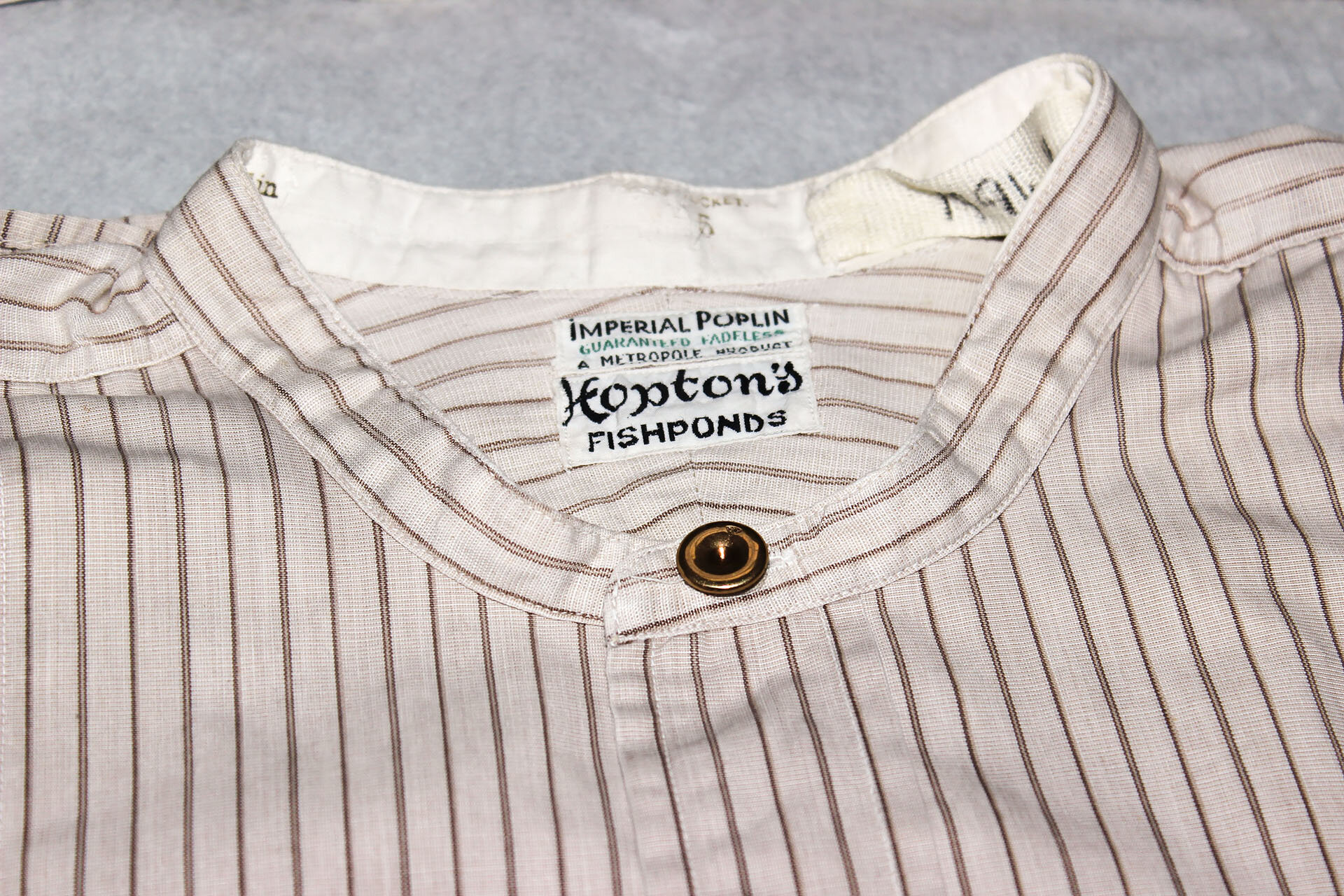Make Do and Mend?
/1994.11
This shirt and collar are from a collection of material belonging to Alec Cathcart, local farmer and cyclist, who was a founder member of the Stonehouse Wheelers cycling club in 1948. We have over a 100 objects of his dating from the 1940s to the 1990s including his touring bike built to his specifications in 1962. The shirt is made of cotton poplin and features a fabric label for a retailers called Hopton’s in Fishponds, Bristol. The cotton collar is 1 of 3 that could be worn with the shirt, attached using brass collar studs. This shirt is made of natural materials and its label suggests it was made in the UK. It had collars that could be washed and starched separately and could be kept and re-used with other garments. There is a darned repair on one of the shoulders, reflecting how it was common practice in the mid- 20th century to repair garments rather than throw them away when they got damaged.
Since the 1950s consumers have increasingly embraced mass-produced clothing sold cheaply to keep up with fashion trends. In the 1990s and 2000s the term ‘fast fashion’ emerged to describe companies producing low-quality clothes to follow fast-moving trends, cheap enough to be considered disposable. Each year in the UK, 350 000 tonnes of wearable clothes end up in landfill.
The clothing industry is now the second largest polluter in the world after the oil industry. Due to the energy required in production, manufacturing and transportation, it accounts for 10% of global carbon emissions. Today most of our clothes (72%) contain synthetic fibres such as polyester and acrylic, which are made from fossil fuels. Each time we wash a synthetic garment more than a thousand individual microfibres are released into the water, making their way into our waterways and eventually into the food chain. At the end of their life synthetic fibres are not bio-degradable and take approximately 200 years to decompose, emitting harmful gases as they do.
Clothing made from natural fibres like our cotton shirt, also have an impact. 1kg of cotton requires 20000 litres of water to grow and the chemicals used can lead to soil degradation. The dyeing and finishing of all clothes requires huge quantities of water and in some countries these wastewaters are dumped straight into rivers. It is evident that the impact of the fashion industry on the environment is a vast and complex subject, without even mentioning the human impact.
With all these things to consider, it is difficult for consumers to know what choices to make. Sustainable clothing companies are a growing part of the industry, offering clothes made from recycled materials or organic natural materials with certifications regarding the use of chemicals and working practices. There are more opportunities to buy second hand or swap clothes and high street retailers are offering schemes to pass old clothes onto charity or be recycled. To keep it simple, many are starting to look back to what their grandparents would have done: buy less, buy clothes that last, repair or repurpose and then pass it on.






